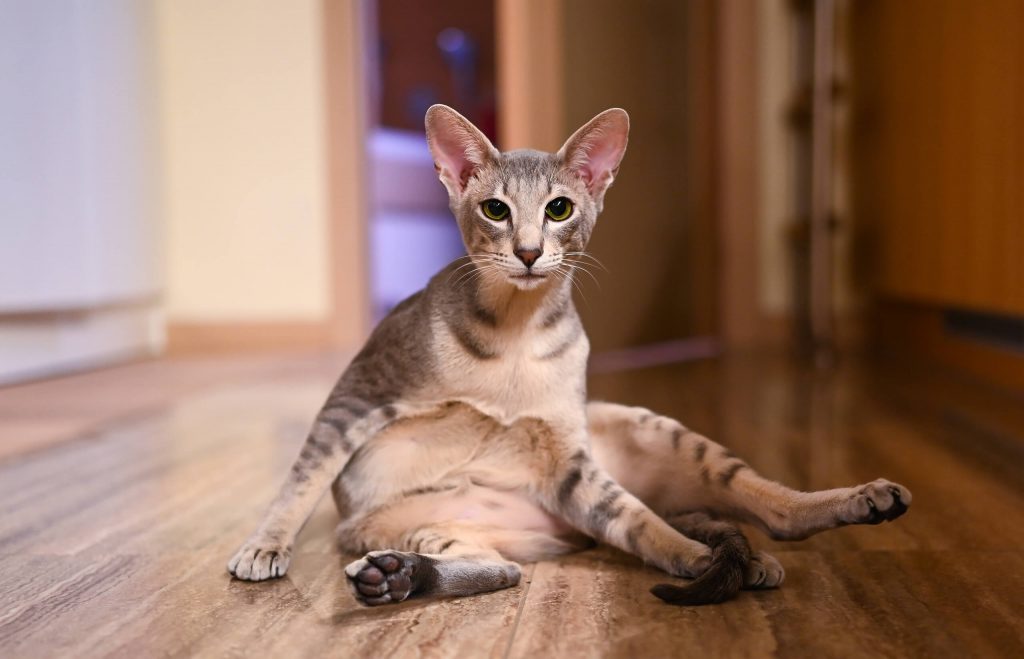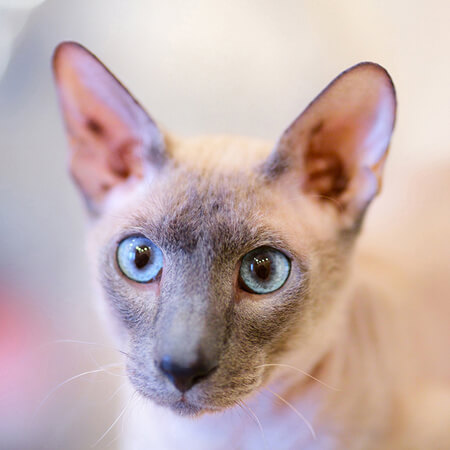The history of the Peterbald
The history of the Peterbald began in 1994 in St. Petersburg, Russia, when a Russian felinologist named Olga
S. Miranowa conducted an experiment that crossed a female Oriental Shorthair with a male Don Sphynx. The aim was most likely to breed an oriental-looking cat with a Sphynx coat. Miranowa named her new cat breed “Peterbald”, whereby the “Peter” represented the cat’s birthplace in St. Petersburg and the ”bald” provided a clue as to just how little fur these cats had on their body.
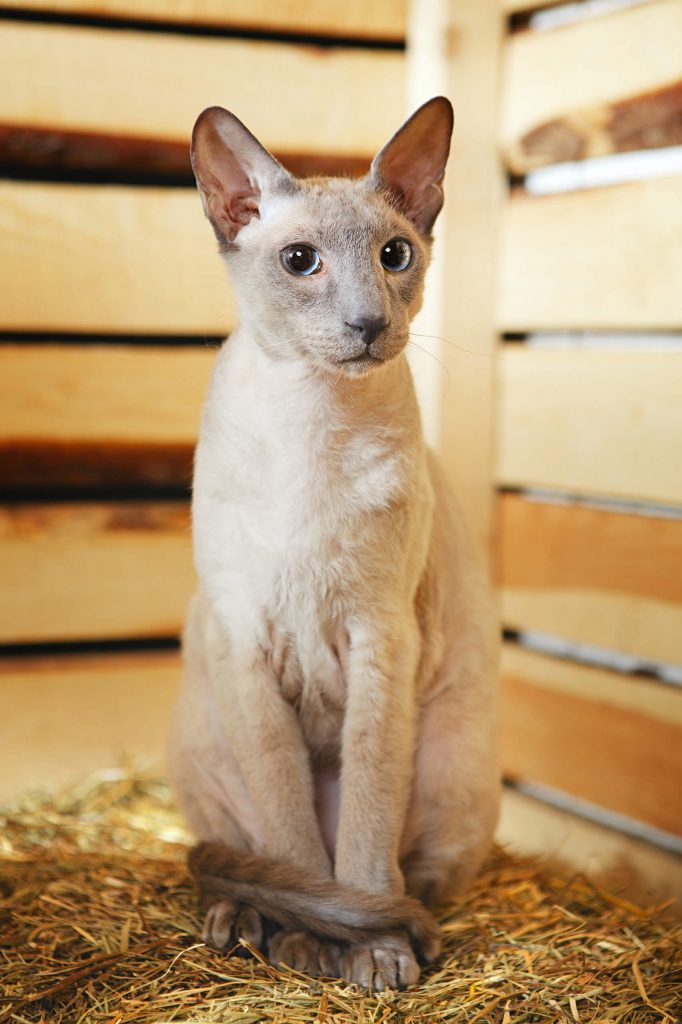
Appearance of the Peterbald
The appearance of the Peterbald is reminiscent of Oriental Shorthairs and Javanese cats. Just like those breeds, the Peterbald has a long and slender body. Despite this elegant appearance, these deep-chested medium-sized cats are more muscular than you might think. With its typical contours, their wedge-shaped head is longer than it is wide, and their straight nose serves to extend the wedge shape of the head. The Peterbald muzzle and chin are slightly rounded, and their large ears are particularly wide at the base. The beautiful almond-shaped eyes of the Peterbald will shine at you in intense aquamarine blue or emerald green.
Size of the Peterbald
How big does a Peterbald get? Peterbald kittens will grow and develop at a rapid pace in the first weeks after they’re born. In this phase of their lives, you’ll be able to see just how fast the baby kittens turn into the feline equivalent of children and teenagers. The growth phase of a Peterbald will be complete at around 18 to 24 months, at which point they officially become adults. When fully grown, the shoulder height of a Peterbald can be around 30 to 35 cm as measured from the front paws to the highest point of their shoulder blades.
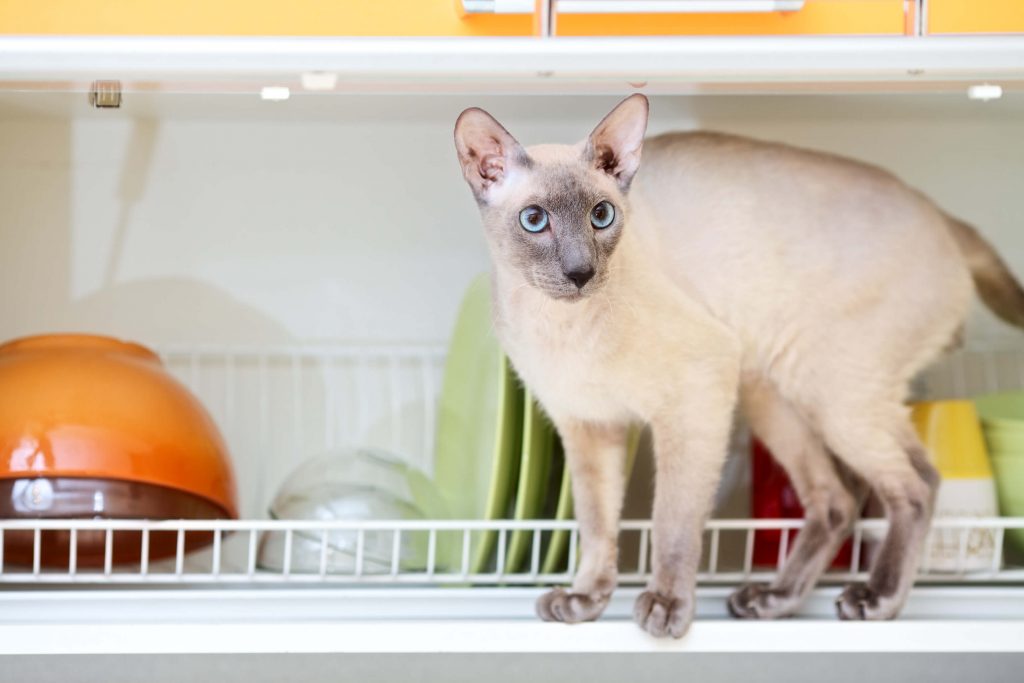
Weight of the Peterbald
How much does an average Peterbald weigh? While female Peterbald cats weigh between 2 and 4 kg, their male counterparts are more muscular and roughly 1 kg heavier, weighing roughly 3 to 5 kg. Just like their female counterparts, male Peterbald cats are very gracefully built, which means they’re likely to weigh less than males of many other cat breeds
Coat of the Peterbald
The Peterbald cat has a number of different coat types. Although Peterbalds literally have the word “bald” in their name, these are not necessarily hairless cats. They have 5 possible coat types in total: cats with no fur, with almost no fur, with rough fur, with light fur or with short fur. Everything depends on the presence of the recessive gene responsible for the absence of fur. Only if both parents – the male and the female – carry this gene will they produce kittens without fur.
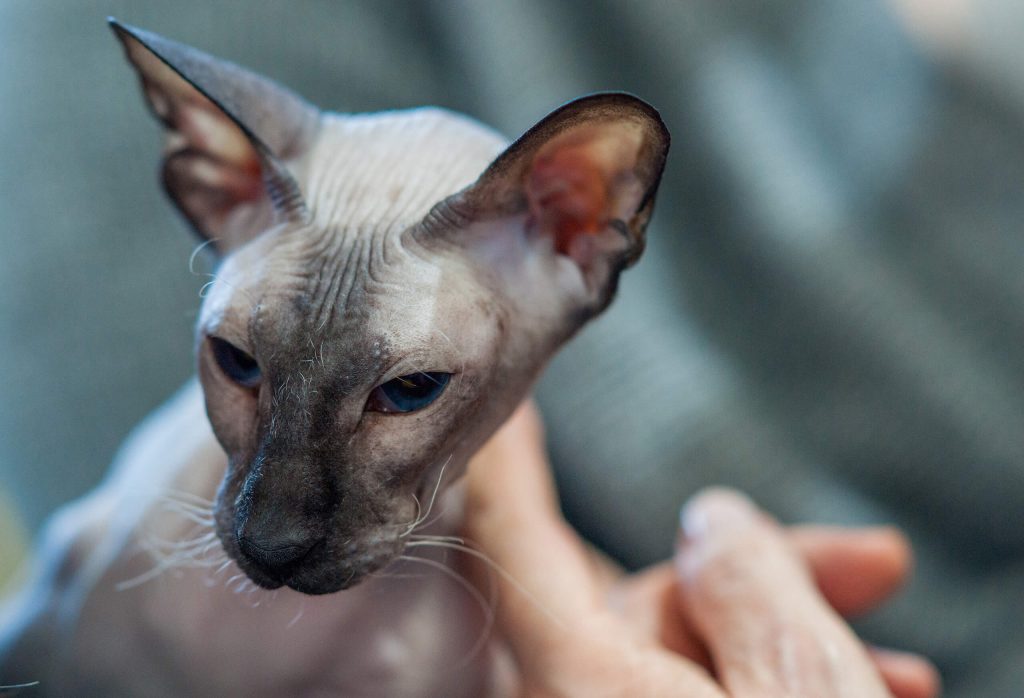
Coat colour of the Peterbald
The Peterbald’s fur comes in many different colours. In fact, this breed can have a coat in all common colours and colour combinations. Whatever you like, everything is permitted! Even white spots are allowed and not at all a problem in these furry friends. In hairless Peterbald cats, the colour of the eyes should match the colour of the skin.
Coat length of the Peterbald
If the Peterbald actually has fur on its body, that fur will be very fine and short. Even those Peterbalds that are
considered hairless will have short hairs, just like other hairless cats. You’ll be able to see the fur if you look very closely: the Peterbald’s body will be covered with very fine, short peach fuzz! Interestingly, it’s possible for Peterbald cats that are born with hair to actually lose their hair over time.
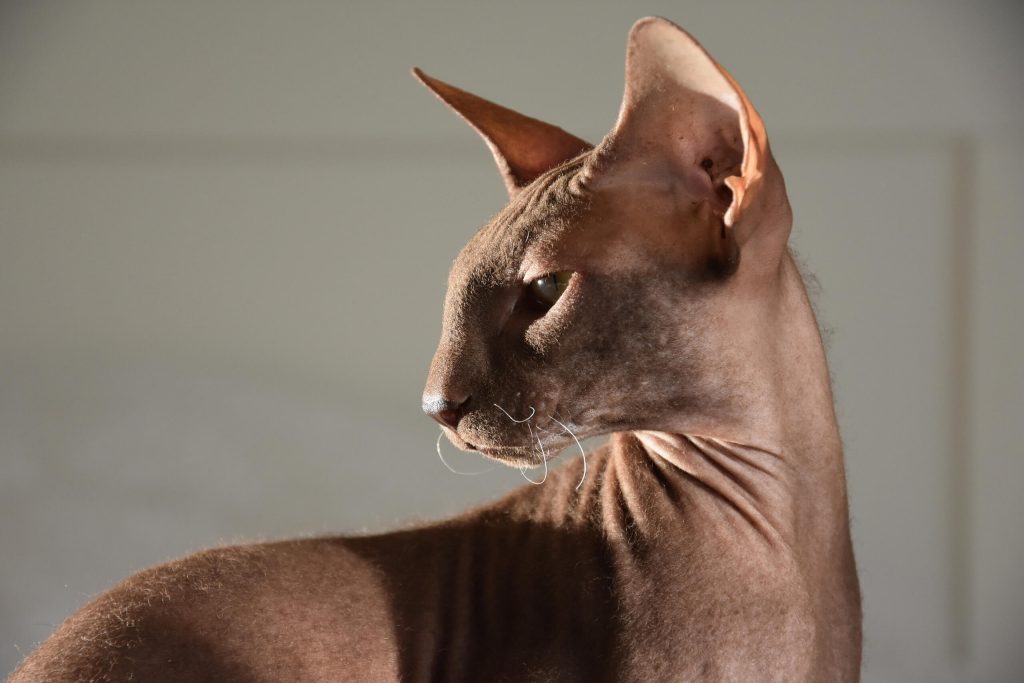
Coat pattern of the Peterbald
The coat patterns of the Peterbald are just as varied as its shape and colour. For example, in addition to all the basic colours, the Peterbald can have a tabby pattern, and this tabby pattern can come in 4 different varieties: spotted, mackerel, ticked and blotched. This creates an endless array of possibilities when it comes to the appearance of the Peterbald!
Eyes of the Peterbald
The Peterbald has expressive, almond-shaped eyes that are large but not too dominant. Their eyes are slightly slanted and perfectly balanced on their head. According to the breed standard, the preferred eye colour for the Peterbald is a bright blue or green with no clouding or any shade of colouring. In other words, it’s not desirable for a Peterbald to have small touches of colour in their eyes or any other colours that could “water down” the blue or green.
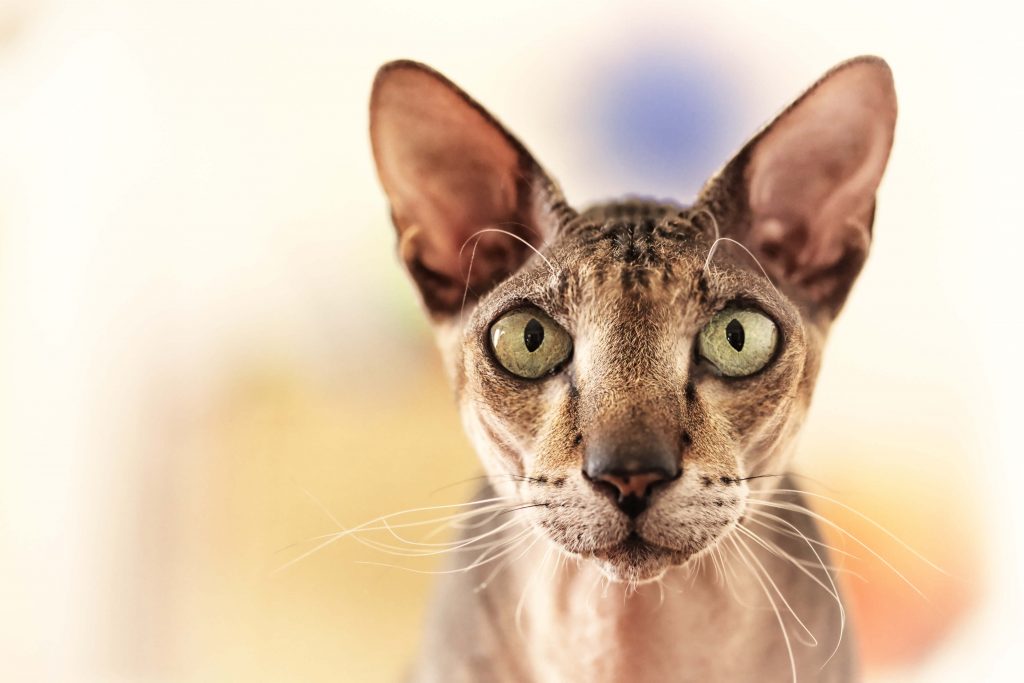
Special features of the Peterbald
One special feature of the Peterbald comes in the form of its long toes, which make it a very agile and dexterous cat. Paws and claws are some of the most important “tools” cats need to catch and hold onto prey, but also to climb and jump. In a sense, paws are a cat’s hands and feet, and these paws also have toes, most of which are highly flexible. There are five toes on each of the front paws and four on each of the back paws. One toe – let’s call it the thumb – is hardly noticeable because it’s located lower down from the ball of the foot. In most cats, this “thumb” isn’t as flexible and well-developed as their other toes. Peterbald cats, however, are able to use their toes to open doors and grab things with great agility…
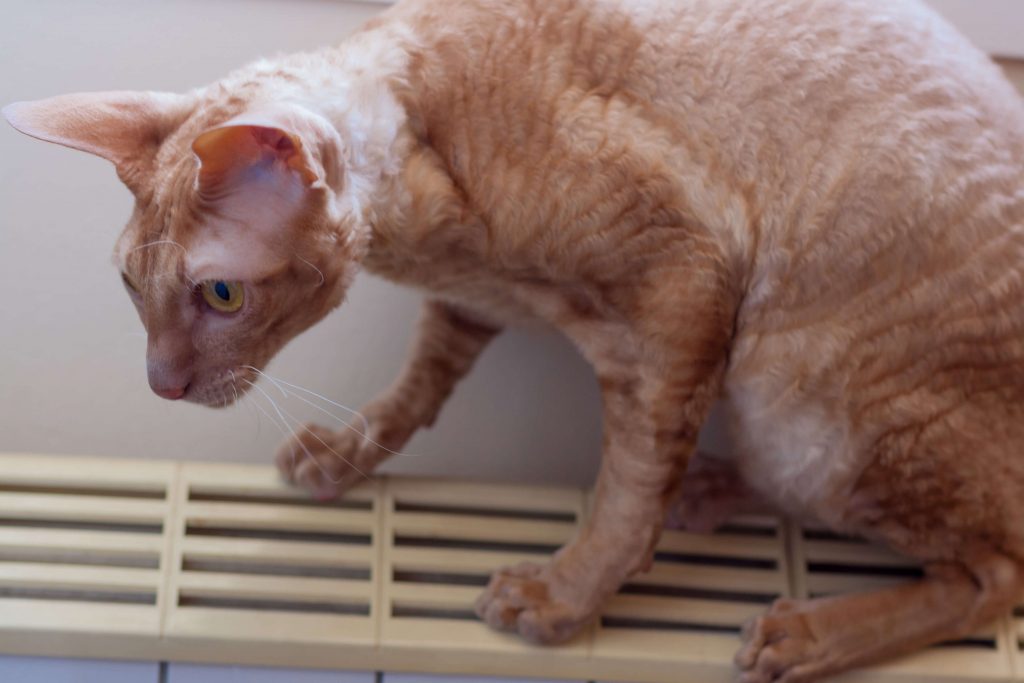
Key attributes of the Peterbald
Two key attributes of the Peterbald are their intelligence and their need for movement. They need climbing opportunities and exercise wheels so that they get plenty of movement indoors. This kind of activity is great for the physical fitness of these agile creatures. Peterbalds will also love being challenged mentally with intelligent toys and games of skill. And don’t forget; you don’t have to spend huge amount of money on toys! )! With a little imagination, you can make many of them yourself using simple items found in every household!
Character of the Peterbald
In terms of character, the Peterbald is similar to the Oriental Shorthair and the Siamese. And this applies to more than just their talkativeness! Members of all three of these cat breeds have strong personalities and demand that attention be paid to them. But they will also show much affection to their owners as soon as they’ve welcomed them into their hearts. This is why they’re also referred to as the “dog among cats”. They’re known for adapting perfectly and for being very lively and entertaining. All in all, they’re amusing creatures that love being the centre of attention.
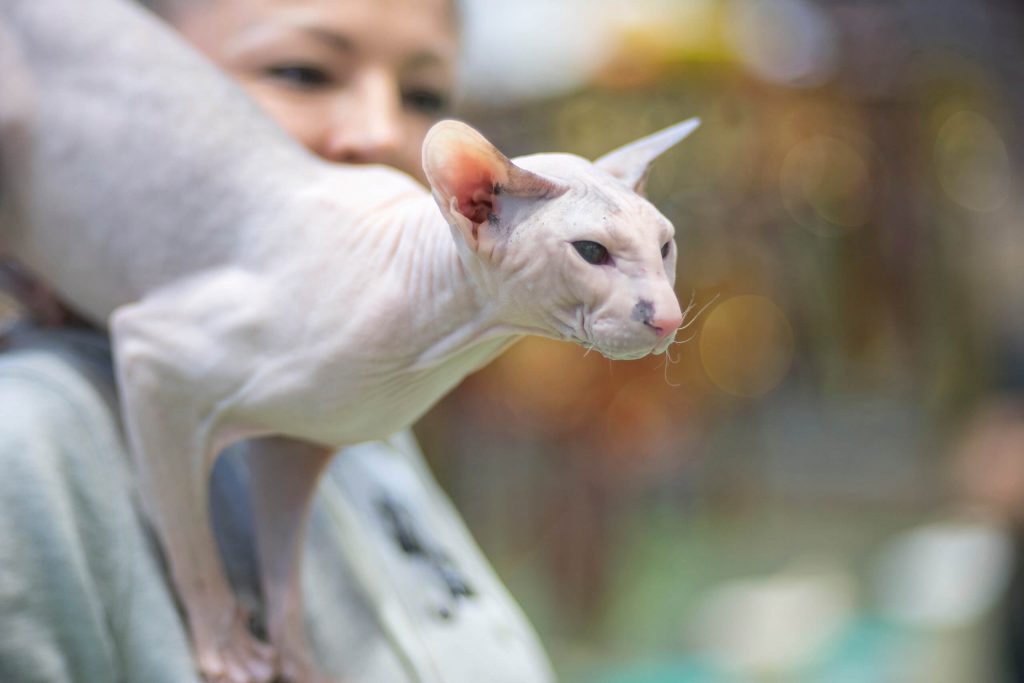
Price of the Peterbald
How much does a Peterbald cost? The price of a Peterbald can vary depending on the breeder as well as the age, pedigree and sex of the cat. The pricing is based to a large extent on the family tree of the cat’s parents. In other words, breeders will charge higher prices for the offspring of award-winning cat parents or for pedigree cat parents that have already been featured at cat shows. The average price for a Peterbald cat will run between €700 and €1,300
The breeding of the Peterbald
The Peterbald has been recognised as an independent breed by the SFF (Selectional Feline Federation) since 1996, by the TICA (The International Cat Association) since 1997, by the WCF (World Cat Federation) since 2003 and by the FiFé (Fédération International Féline) since 2012. When breeding the hairless Peterbald, meticulous care is taken to ensure that Peterbald cats with this coat type are not mated with pure hairless cats. Breeders usually crossbreed Peterbalds with Balinese, Burmese, Oriental Shorthairs, Oriental Semi-Longhairs or Siamese cats, because they’re preferred and entirely unproblematic. Any crossbreeding carried out with these cat breeds is done to keep a very rare breed like the Peterbald healthy. In other words, the gene pool of the breed is expanded to avoid inbreeding and prevent the emergence of any associated hereditary diseases.
Interesting facts about keeping and caring for Peterbalds
When keeping and caring for Peterbald cats, owners should always seek to meet their specific needs. The best way to keep them healthy and active is to make sure they have plenty of opportunities to move their bodies and challenge their minds. Indoor Peterbalds will love spending time on a secured balcony, because there’s so much so see from there! Peterbald cats with lighter fur will also be very happy if they can get some fresh air in pleasant temperatures. You might even want to try taking your Peterbald out on a leash with a light coat on.
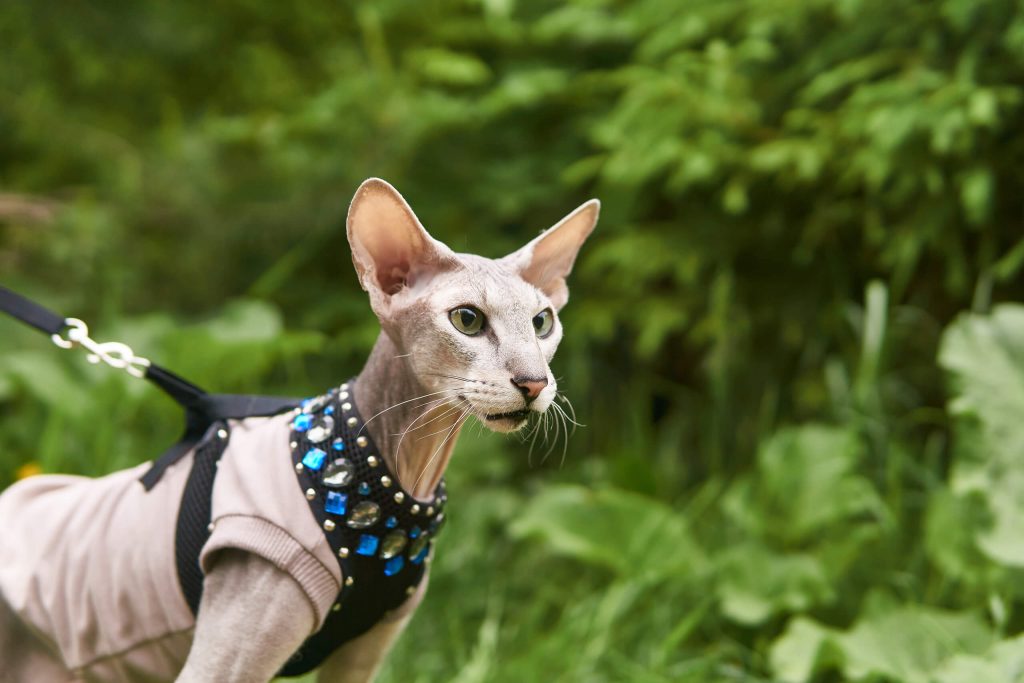
The Peterbald kitten
Six-week-old Peterbald kittens for sale? Stay away from anyone making this kind of offer! Some people will try to make as much money as possible selling a special breed of cat, sometimes to the detriment of the cats themselves. A reputable breeder will insist that kittens stay with their mother for 12-13 weeks before they’re given away. According to a Finnish study¹, cats that were weaned after 14 to 15 weeks were much tamer, ate better and showed no symptoms such as excessive licking or grooming. Before buying a cat you should get comprehensive information on the breeder and the Peterbald litter. And also stay away from anyone claiming to be selling Peterbald kittens at a particularly cheap price.
¹Source: taz.de (7 Oct. 2017): “From baby to rioter”, online under Study on cats separated from their mother: From baby to rioter – taz.de, accessed on 16 Feb. 2024
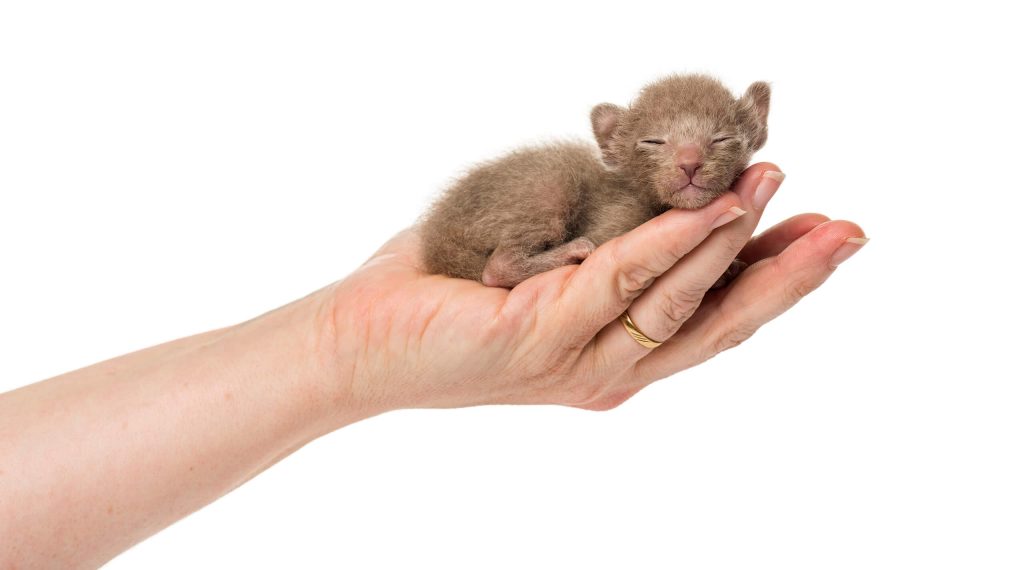
Typical diseases of the Peterbald
Whether a Peterbald is prone to illness depends on many different factors, including the genes it’s inherited from its parents and grandparents, the way it is kept and its entire environment. If the Peterbald becomes ill, their genetic make-up means that their eyes (progressive retinal atrophy) and their heart muscle (hypertrophic cardiomyopathy) might also be affected. Reputable breeders will seek to prevent this by having their cats regularly examined using genetic testing or cardiac ultrasound. This makes it possible to identify cats that have a changed gene and thus prevent the passing-on of hereditary diseases, so that all offspring are born healthy.
Life expectancy of the Peterbald
The Peterbald has an average life expectancy of 12 to 15 years. However, it’s impossible to predict exactly how long
a cat will live, even a Peterbald! In fact, some Peterbald cats have managed to far exceed the average life expectancy of their breed. Remember that every cat ages, but each does it differently, depending on a whole slew of factors. One
thing is certain; only cats in good physical and mental shape will have long and happy lives!
